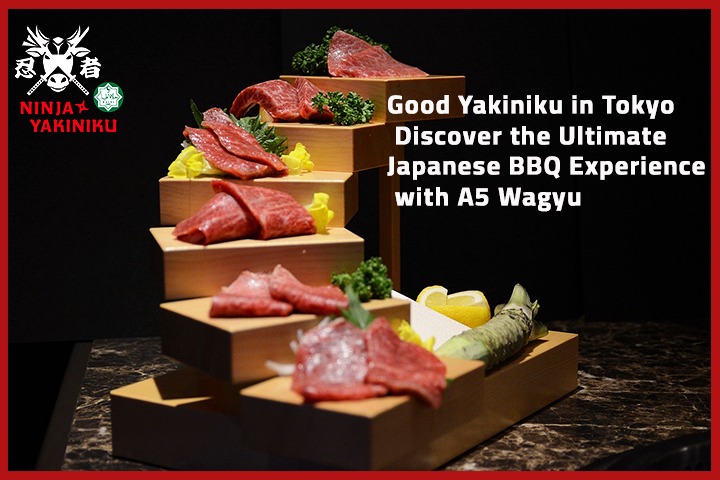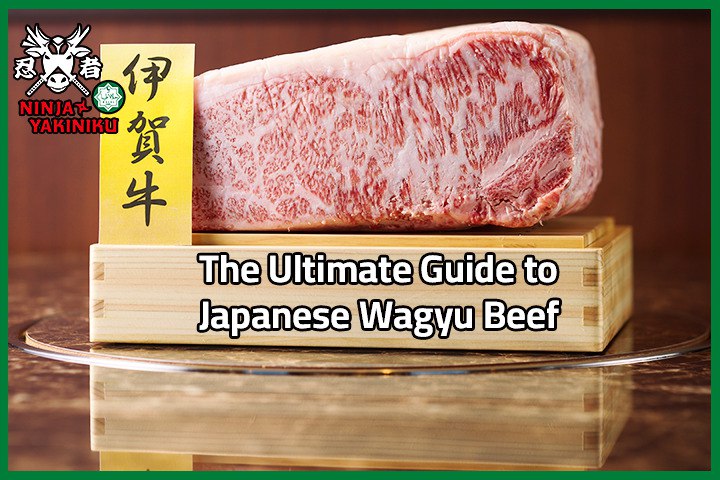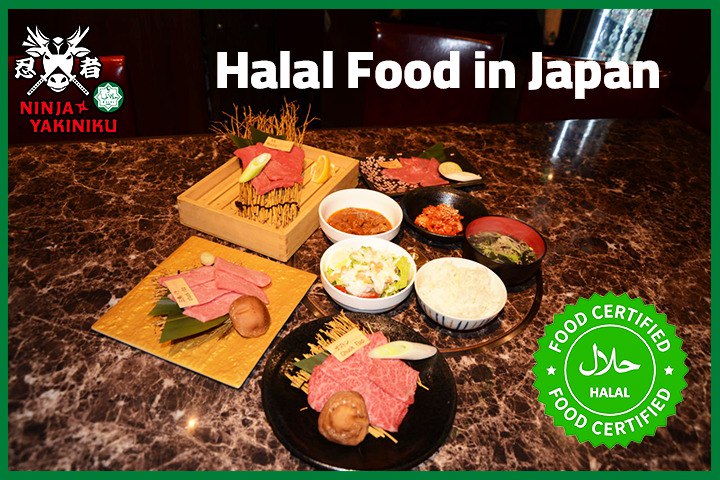The Ultimate Guide to Japanese Wagyu Beef: A Journey You Won’t Forget
If you’re planning a trip to Japan, there’s one experience that should be at the very top of your list: eating Japanese Wagyu beef. Trust me on this. I still remember the first time I tried it. The beef was so tender it felt like it melted on my tongue, and the flavor was just… out of this world. It wasn’t just a meal; it was a moment. This is a journey you truly won’t forget, so let’s talk about everything you need to know to make it happen.
What Is Wagyu Beef in Japanese?
The word “Wagyu” itself is a simple combination of two Japanese characters: “Wa” (和), which means “Japanese,” and “gyu” (牛), which means “cow.” So, when you see it on a menu, you’re literally looking at a piece of “Japanese cow.” It’s a very specific, traditional type of beef that comes only from four unique breeds of cattle. Knowing this little detail adds so much to the experience, making every bite feel like a taste of Japan’s history. It’s a cultural connection as much as it is a culinary one.
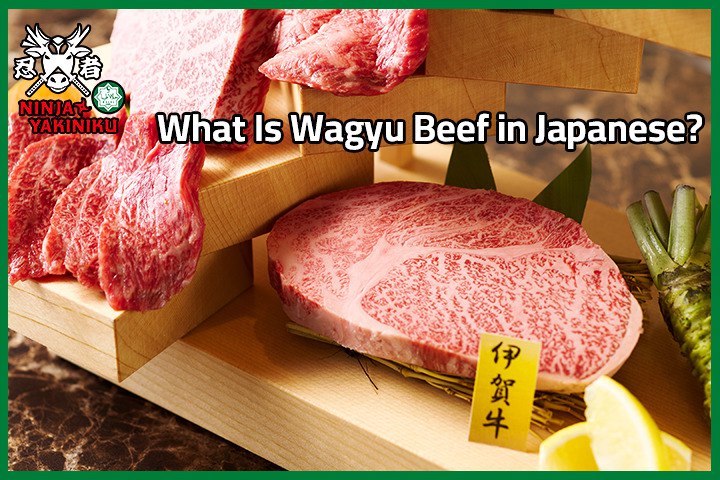
The History of Wagyu: From Japanese Tradition to Global Fame
The story of Wagyu is a fascinating one. For centuries, these cattle were actually used for labor in agriculture. They were tough and strong, but over time, farmers in different regions began to breed them for specific traits, focusing on endurance and muscular energy.
This led to a unique genetic predisposition for storing fat inside the muscle tissue, not just on the outside. Eventually, after beef became a staple in the Japanese diet, this genetic trait was perfected to create the unbelievably marbled meat we know today. Now, it’s not just a part of Japanese tradition; it’s globally famous for its incredible quality.
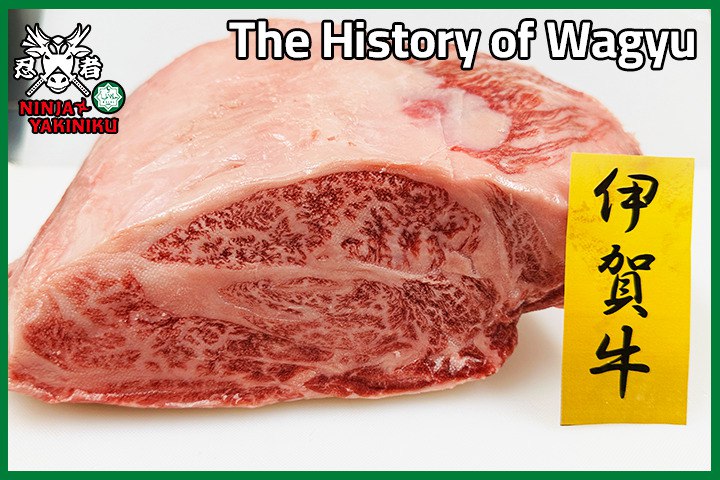
What is so special about Japanese wagyu beef?
Oh, where do I even begin? The thing that makes Japanese Wagyu beef so special is its marbling. It’s not like the fat you see on normal steaks. This is a delicate, intricate web of white fat that runs through the muscle fibers, giving the meat a buttery texture and a rich, sweet flavor. It’s a completely different experience from any other steak you’ve ever had. It melts at a much lower temperature, which is why it just dissolves in your mouth. You’ll find yourself closing your eyes to savor the flavor, because it’s honestly that good.
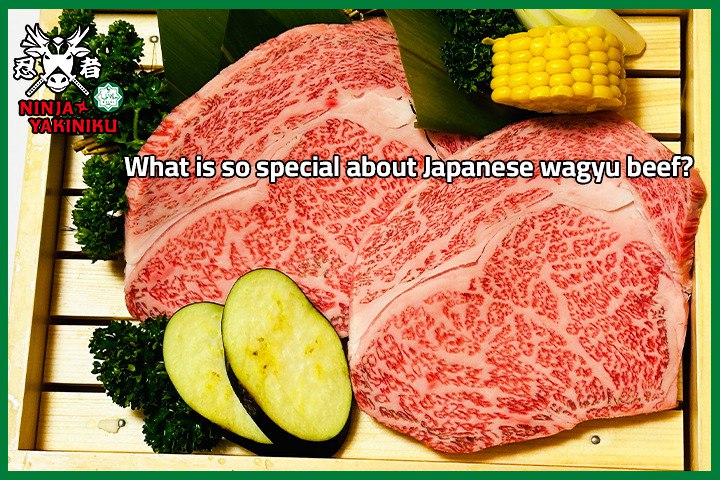
Wagyu vs. Kobe Beef: What’s the Difference?
This is a question I get all the time. People often think they’re the same thing, but they’re not! Think of it like this: all Kobe beef is Wagyu, but not all Wagyu is Kobe. Kobe beef is a specific type of Wagyu that comes from a very particular region in Japan, the Hyogo Prefecture. It has to meet a whole list of strict requirements, like a certain marbling score, a specific grade, and even the type of grain the cows are fed. It’s a very famous and highly-prized brand of Japanese Wagyu beef, but it’s just one type among many.
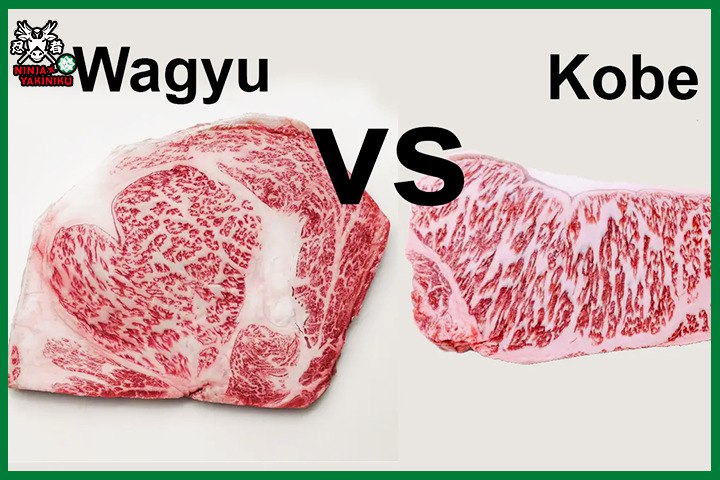
What is better, A5 or A9 Wagyu?
You might hear a lot about A5 Wagyu, which is the highest possible grade. The “A” stands for the yield grade (how much usable meat you get from the carcass), and the “5” is the quality score. There’s no such thing as an A9 grade, because the quality scale only goes from 1 to 5. So, if someone talks about A9 Wagyu, they’re probably just using it as a way to say it’s extra, extra special. The highest you can officially get is an A5, which is already a masterpiece of marbling.
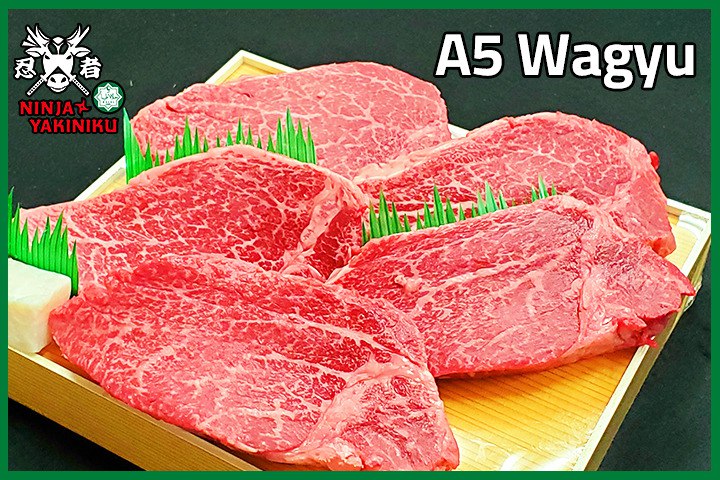
The Science of Marbling: Understanding Wagyu’s Signature Texture
The magic of Wagyu comes down to something called “Intramuscular Fat” (IMF). This is that beautiful, fine marbling we talked about. It contains a high percentage of monounsaturated fats, which are the “good” fats. This gives it that melt-in-your-mouth texture and rich flavor. The marbling is what makes Japanese Wagyu beef truly unique and is why it’s so sought after by chefs and foodies all over the world.
Types of Wagyu: Japanese Black, Brown, Shorthorn, and Polled
Beyond just being incredibly delicious, the world of Japanese Wagyu beef is defined by four distinct breeds. Each one has its own unique history and flavor profile, making the experience of trying them a true journey. It’s not just about marbling; it’s about understanding what makes each one special.

1. Japanese Black (Kuroge Washu)
This is the rockstar of the Wagyu world. Making up around 90% of all Wagyu cattle, the Japanese Black is the most common and widely exported breed. When you hear people talk about “that famous melt-in-your-mouth Wagyu,” they’re almost always talking about this one.
Origin: The breed originated in the Chugoku region of western Japan and is now raised all over the country.
Characteristics: It’s famous for its unparalleled, intense marbling. The fat is evenly distributed throughout the meat in a fine, intricate web. This gives it a soft, buttery texture and a rich, sweet, and nutty flavor that you can’t find anywhere else. The meat itself has a deep, rosy color.
2. Japanese Brown (Akage Washu)
Also known as “Akaushi” (which means “red cow”), the Japanese Brown offers a slightly different experience. It’s less fatty than the Black breed and is a great option if you want to enjoy a rich beef flavor without the overwhelming marbling.
Origin: This breed is primarily from the Kumamoto and Kōchi prefectures.
Characteristics: Its defining trait is a balanced mix of marbling and lean red meat. It’s known for having a clean, savory flavor and a nice, firm texture. Because it’s leaner, it’s often considered a healthier option and is highly valued for its strong “beefy” taste.
3. Japanese Shorthorn (Nihon Tankaku Washu)
The Japanese Shorthorn is quite a rare find, making up a very small percentage of the total Wagyu population. It’s a real treat for those who prefer a meatier, less marbled steak.
Origin: It comes from the chilly Tohoku region in northern Japan.
Characteristics: This breed is known for its very lean, red meat. The fat content is low, but the meat is rich in healthy amino acids and umami compounds. This gives it a robust, deep flavor that is incredibly satisfying. It’s a great way to experience Wagyu in a different light, focusing on pure, powerful beef flavor.
4. Japanese Polled (Mukaku Washu)
This is the rarest of the four breeds and is actually considered critically endangered. As its name “Polled” suggests, these cattle are born without horns, which makes them stand out visually as well as culinarily.
Origin: It originated in the Yamaguchi Prefecture.
Characteristics: Similar to the Shorthorn, the Japanese Polled is very lean with minimal marbling. It’s highly prized for its exceptional beef flavor. Because it’s so rare, it can be quite a challenge to find, but tasting it is a unique and special opportunity to experience a piece of Japanese agricultural history.
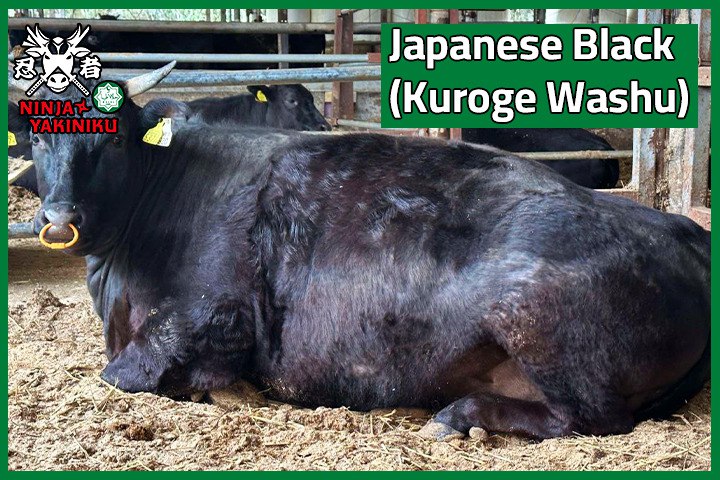
Wagyu Grading System: How Quality Is Measured
Japan has a super strict grading system to ensure quality. It’s a bit complicated, but it’s important to know. The grade has two parts: a letter (A, B, or C) for the yield, and a number (1 to 5) for the quality. A is the highest yield, and 5 is the highest quality. So, an A5 Wagyu is the best of the best. This grading system guarantees that you’re getting exactly what you pay for.
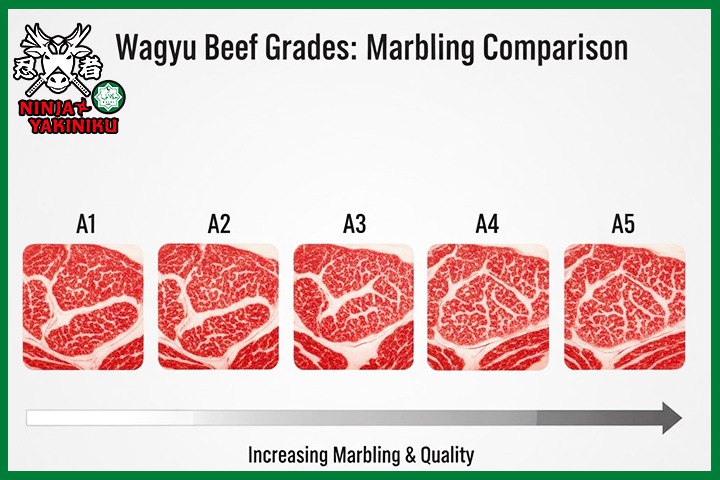
Is Japanese A5 Wagyu Halal? Can Muslims Eat Wagyu Beef?
This is a really important question for many travelers. The beef itself is halal because it comes from a cow, which is a halal animal. The key is how the animal is slaughtered and if there’s any cross-contamination. Many Muslim travelers can and do enjoy Wagyu beef, but you need to find a place that prepares it correctly. And of course, Ninja Yakiniku Wagyu Asakusa does exactly that – serving halal-certified Wagyu, following the proper slaughtering process, and using a dedicated grill for Muslims. Here you can enjoy authentic, melt-in-your-mouth A5 Wagyu in Tokyo with complete peace of mind, knowing everything is prepared with the highest care for halal standards.
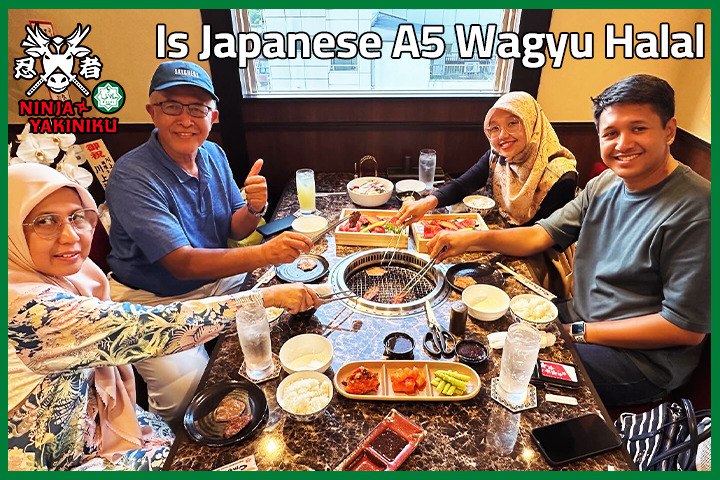
The Flavor Profile of Wagyu: What to Expect in Every Bite
So, what does it actually taste like? It’s hard to describe in words, but I’ll try. The flavor is a delicate balance of sweet, savory, and umami. It’s not overpowering like a regular steak; it’s more nuanced. The fat gives it a slight sweetness, and the rich meat flavor is perfectly balanced by the incredible tenderness. You’ll feel it literally melt as soon as it hits your mouth. It’s an experience that’s worth every penny.
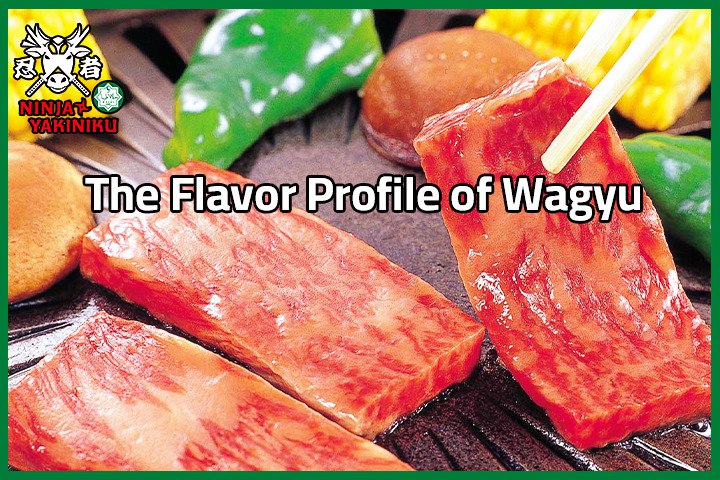
Where to Eat Authentic Wagyu in Japan, and the best wagyu beef in the world at Ninja Yakiniku
You’ve got to go to a place that specializes in A5 Wagyu Beef in Japan, you can find incredible Wagyu at high-end restaurants, teppanyaki grills, or yakiniku spots where you cook the meat yourself. One fantastic place to consider is Ninja Yakiniku wagyu Asakusa They are famous for serving what many consider to be the best Wagyu beef in the world, and they often cater to international visitors, making the experience easy and welcoming. Cooking that incredible Japanese Wagyu beef on a grill right at your table is a truly unforgettable experience.Don’t miss to book your table
Read More
